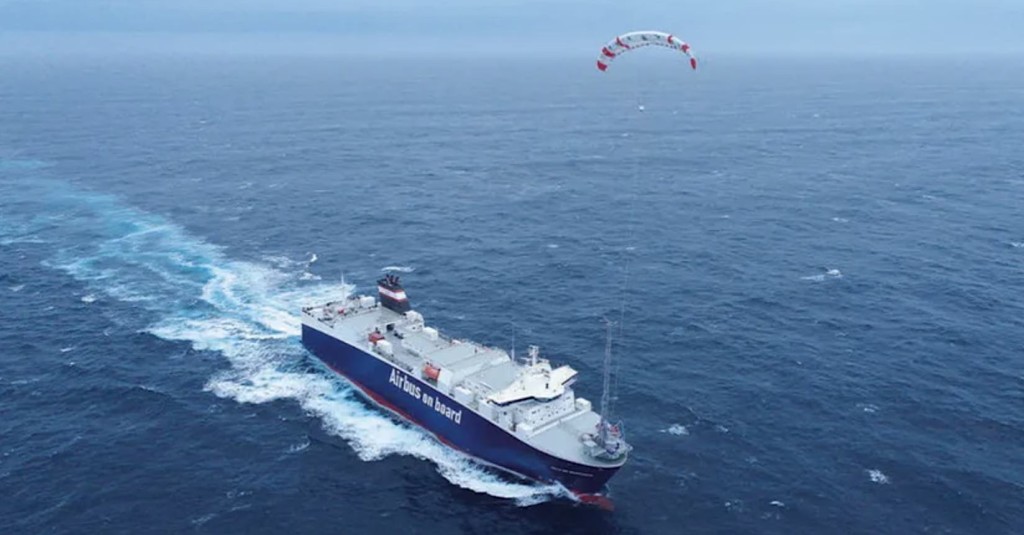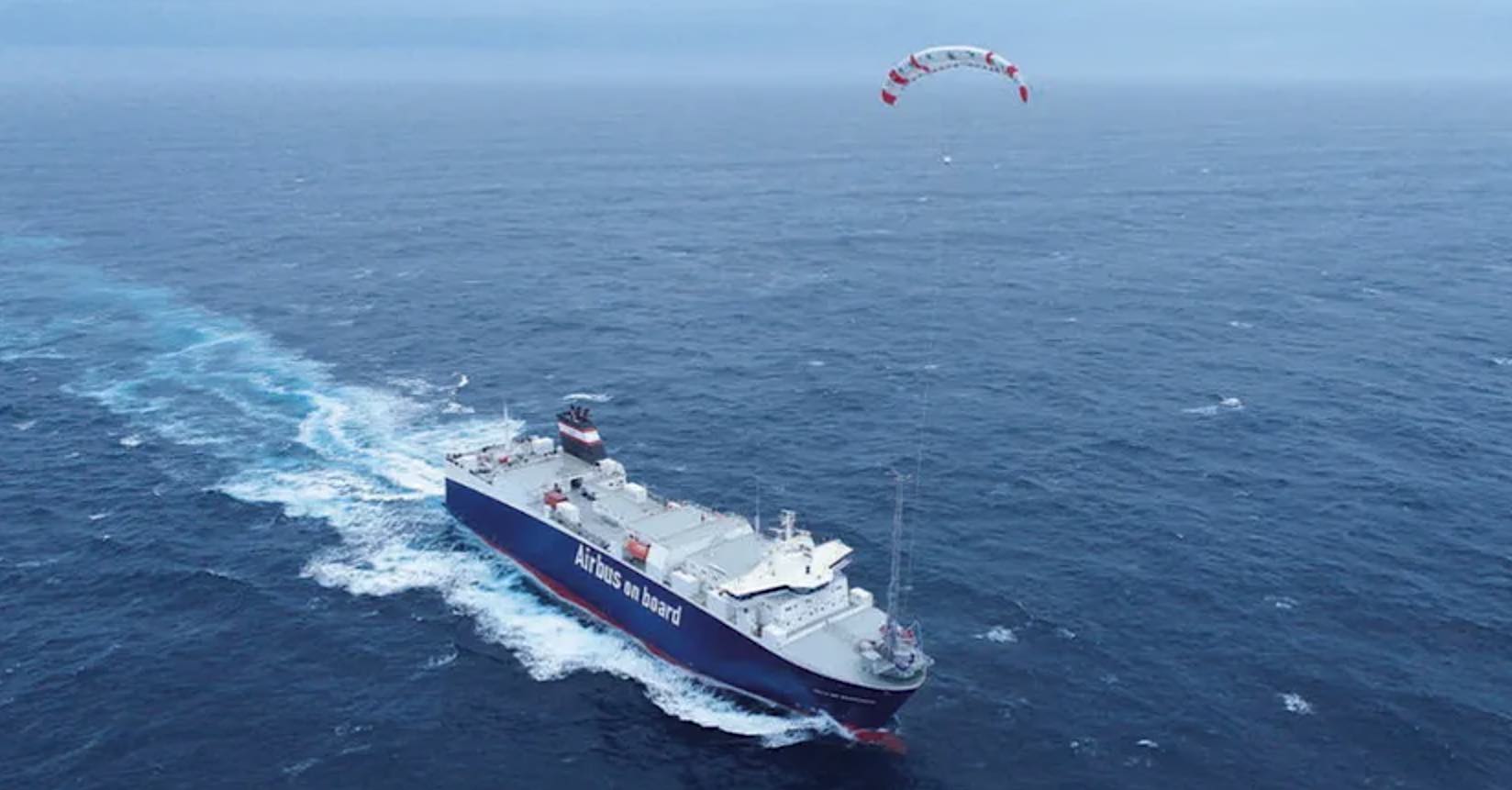
Using an ancient solution for a modern problem, a firm successfully tested how a giant kite can be used to tug shipping vessels across the ocean and significantly reduce the amount of diesel fuel they use.
It’s tempting to call the product a sail, and the activity sailing. However even the word kite belies the technological sophistication of the “Seawing,” built by AirSeas.
Retrofitted onto the front of any container ship, this massive “parafoil” can generate 20% of the vessel’s total propulsion. This was recently confirmed as part of a test with a French container ship—the Ville de Bordeaux—as it moved aircraft parts from the US to France.
AirSeas makes the Seawing in 2,700-square-foot and 5,400-square-foot models. The startup is also developing a 10,800-square-foot version, all of which are housed in consoles at the front of the ship.
YOU MAY ALSO LIKE: Mini Wind Turbines For Rooftops: ‘Up to 50% More Power’ and No Spinning Blades
The company is thrilled to have reported that the Ville de Bordeaux reduced its consumption of a dirty diesel composite called “bunker fuel” by 20% over the course of its journey.
“The last few months have seen major players like COSCO, BHP, and MOL join the ranks of wind propulsion backers alongside K-Line, Louis Dreyfus Armateurs, Oldendorff, Scandlines, and Cargill,” Stephanie Lesage, Corporate Secretary of AirSeas, wrote in a recent op-ed.
“Cargo owners, charterers, shipowners, and shipyards alike are all coming to realize the benefits of wind-assisted propulsion in shipping’s journey towards a lower carbon future.”
MORE FROM SHIPPING: Major Turning Point in 2021 Saw Global Shipping Take Massive Steps to Reduce Emissions
The industry generates about 2% of the world’s greenhouse gas emissions, but 15% of sulfur dioxide and nitrous oxide emissions, which can be toxic to breathe for both man and fish.
Meant to be fully automatic, it’s one of the most hi-tech sails you’re likely to see. At the push of a button, the parafoil is evenly deployed from its command console into a sharp breeze by a series of tethers. Once deployed, the tethers are programmed to gather information about yaw, pitch, and wind directions to constantly shift the position of the parafoil to catch the greatest amount of wind energy.
Once the kite is no longer needed, or the wind goes flat, it evenly retracts back into its command console.
“We are launching a flying object from a sailing object, compensating for movement on all sides, such as waves in high seas and turbulence at low altitude,” Vincent Bernatets, CEO of Airseas told Canary Media, explaining the difficulties.
“After the flight, we have to ensure that the Seawing lands smoothly and precisely on a moving target: the ship bow, which is oscillating on waves and generating heavy turbulence and movement.”
Depending on what you classify as merchant shipping, the world uses between 50,000 and 100,000 merchant vessels to transport goods and materials around the globe, so the scaling-up potential is large.
AirSeas already has several buyers lined up. Japanese shipper K Line could outfit as many as 50 ships in the next few years with Seawings.
WATCH the test onboard the Ville de Bordeaux…
SHARE This Cool Piece Of Green Tech With Your Friends…




















